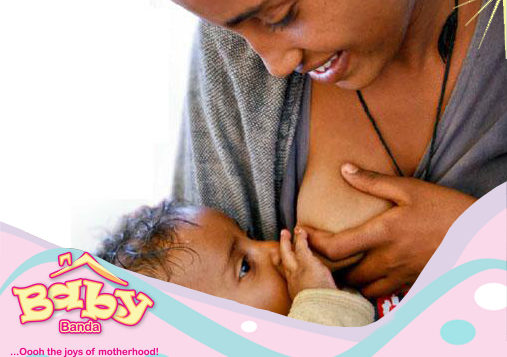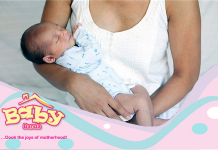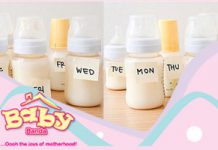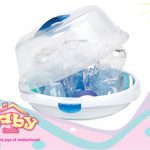Breastfeeding can be challenging at times, especially in the early days. But it is important to remember that you are not alone. Below are some challenges that affect most breastfeeding mums. Read on the different ways to troubleshoot these challenges.
Low Milk Supply
Perceived low milk supply (LMS) has been a concern of new mothers forever! When you are breastfeeding you certainly can’t see the amount of milk flowing into your baby’s mouth as a bottle-feeding mother can. Most moms say, “I don’t think I have enough.” Don’t feel alone and remember human breast milk is best for baby medical research recommends breast-feeding for at least the first six months, and preferably for more than a year.
What is interesting about Low Milk Supply whether perceived or actual, it is a huge stumbling block for mothers. When new moms begin supplementing with infant formula they begin a downward cycle of less nursing, and thus, less milk supply. Remember the best way to ensure adequate milk supply is to
- Nurse frequently, stimulating the breast to produce milk. The infant sucking at the breast and stimulating it is what makes milk! Nurse frequently, 10-15 minutes on each breast every two to two and a half-hours; breastfeeding at least 8 times in 24 hours.
- Drink lots of fluids, preferably an 8-ounce glass of water every time you pick up your infant to feed. Consume as much juice, milk, herbal tea as you wish in addition to a lot of water. Try beverages like Ginger Ale, but avoid too much coffee or colas.
- Check to see that your baby has 6-8 wet diapers in 24 hours.
- Use hot compresses and hand expression to help initiate let down and encourage your baby to nurse.
Challenge: Sore Nipples
You may also have pain if your baby is sucking on only the nipple.
What you can do
- A good latch is key (Your nipple should not look flat or compressed when it comes out of your baby’s mouth. It should look round and long, or the same shape as it was before the feeding.)
- After breastfeeding, express a few drops of milk and gently rub it on your nipples with clean hands. Human milk has natural healing properties and emollients that soothe. Also try letting your nipples air-dry after feeding, or wear a soft cotton shirt.
Challenge: Engorgement
It is normal for your breasts to become larger, heavier and a little tender when they begin making more milk. Sometimes this fullness may turn into engorgement, where your breasts feel very hard and painful. You also may have breast swelling, tenderness, warmth, redness, throbbing, and flattening of the nipple. Engorgement sometimes also causes a low-grade fever and can be confused with a breast infection. Engorgement is the result of the milk building up. It usually happens during the third to fifth day after birth, but it can happen at any time. Engorgement can lead to plugged ducts or a breast infection, so it is important to try to prevent it before this happens. If treated properly, engorgement should resolve quickly.
What you can do
- Breastfeed often after birth, allowing the baby to feed as long as he or she likes, as long as he or she is latched on well and sucking effectively. In the early weeks after birth, you should wake your baby to feed if four hours have passed since the beginning of the last feeding.
- Breastfeed often on the affected side to remove the milk, keep it moving freely, and prevent the breast from becoming overly full.
- Avoid overusing pacifiers and using bottles to supplement feedings.
Challenge: Plugged Duct
It is common for many women to have a plugged duct at some point when breastfeeding. A plugged milk duct feels like a tender and sore lump in the breast. It is not accompanied by a fever or other symptoms. It happens when a milk duct does not properly drain and becomes inflamed. Then, pressure builds up behind the plug, and surrounding tissue. A plugged duct usually only occurs in one breast at a time.
What you can do
- Breastfeed often on the affected side, as often as every two hours. This helps loosen the plug and keeps the milk moving freely.
- Massage the area, starting behind the sore spot. Use your fingers in a circular motion and massage toward the nipple.
- Use a warm compress on the sore area.
- Get extra sleep or relax with your feet up to help speed healing. Often a plugged duct is the first sign that a mother is doing too much.
- Wear a well-fitting supportive bra that is not too tight, because this can constrict milk ducts. Consider trying a bra without underwire.
Challenge: Breast Infection (Mastitis)
Mastitis (mast-EYE-tiss) is soreness or a lump in the breast that can be accompanied by a fever and/or flu-like symptoms, such as feeling run down or very achy. Some women with a breast infection also have nausea and vomiting. You also may have yellowish discharge from the nipple that looks like colostrum and the breasts may feel warm or hot to the touch and appear pink or red. A breast infection can also occur when other family members have a cold or the flu. It usually only occurs in one breast. It is not always easy to tell the difference between a breast infection and a plugged duct because both have similar symptoms and can improve within 24 to 48 hours. Most breast infections that do not improve on their own within this time need to be treated with medicine given by a doctor.
What you can do
Ask your doctor for help if you do not feel better within 24 hours of trying these tips, if you have a fever, or if your symptoms worsen. You might need medicine. See your doctor right away if:
- You have a breast infection in which both breasts look affected.
- There is pus or blood in the milk.
- You have red streaks near the areola.
- Your symptoms came on severely and suddenly.
- Even if you are taking medicine, continue to breastfeed during treatment. This is best for both you and your baby. Ask a lactation consultant for help if needed.
Challenge: Fungal Infections
Fungal infection, also called a yeast infection or thrush, can form on your nipples or in your breast because it thrives on milk. The infection forms from an overgrowth of the Candida organism. Candida exists in our bodies and is kept at healthy levels by the natural bacteria in our bodies. When the natural balance of bacteria is upset, Candida can overgrow, causing an infection. A key sign of a fungal infection is if you develop sore nipples that last more than a few days, even after you make sure your baby has a good latch. Or, you may suddenly get sore nipples after several weeks of pain-free breastfeeding. Some other signs of a fungal infection include pink, flaky, shiny, itchy, or cracked nipples or deep pink and blistered nipples. You also could have achy breasts or shooting pains deep in the breast during or after feedings.
Causes of thrush include:
- Thrush in your baby’s mouth, which can pass to you. Thrush in a baby’s mouth appears as little white spots on the inside of the cheeks, gums, or tongue. Many babies with thrush refuse to nurse or are gassy or cranky. A baby’s fungal infection can also appear as a diaper rash that looks like small red dots around the main rash. This rash will not go away by using regular diaper rash creams.
- An overly moist environment on your skin or nipples that are sore or cracked.
- Antibiotics or steroids.
- A chronic illness like HIV, diabetes, or anaemia.
What you can do
Fungal infections may take several weeks to cure, so it is important to follow these tips to avoid spreading the infection:
- Change disposable nursing pads often.
- Wash any towels or clothing that comes in contact with the yeast in very hot water (above 122°F).
- Wear a clean bra every day.
- Wash your hands often, and wash your baby’s hands often – especially if he or she sucks on his or her fingers.
- Put pacifiers, bottle nipples, or toys your baby puts in his or her mouth in a pot of water and bring it to a roaring boil daily. After one week of treatment, discard pacifiers and nipples and buy new ones.
- Boil daily all breast pump parts that touch the milk.
- Add friendly bacteria in your gut by taking yoghurt, fermented milk and non-alcoholic malt drinks and slightly fermented porridge. You can also ask your doctor to prescribe these probiotics that you can purchase from a pharmacy if you don’t take milk.
- Make sure other family members are free of thrush or other fungal infections. If they have symptoms, make sure they get treated.
Challenge: Nursing Strike
A nursing “strike” is when your baby has been breastfeeding well for months and then suddenly begins to refuse the breast. A nursing strike can mean that your baby is trying to let you know that something is wrong. This does not usually mean that the baby is ready to wean. Not all babies will react the same to the different situations that can cause a nursing strike. Some babies will continue to breastfeed without a problem. Others may just become fussy at the breast, and others will refuse the breast entirely. Some of the major causes of a nursing strike include:
- Mouth pain from teething, a fungal infection like thrush, or a cold sore.
- An ear infection, which causes pain while sucking.
- Pain from a certain breastfeeding position, either from an injury on the baby’s body or from soreness from an immunization.
- Being upset about a long separation from the mother or a major change in routine.
- Being distracted while breastfeeding – becoming interested in other things around him or her.
- A cold or stuffy nose that makes breathing while breastfeeding difficult.
- Reduced milk supply from supplementing with bottles or overuse of a pacifier.
- Responding to the mother’s strong reaction if the baby has bitten her.
- Being upset after hearing people argue.
- Change in how mum smells e.g. changing your perfume or deodorant and taste of milk when you eat very strong-smelling spices that change the taste of milk.
- Reacting to stress, overstimulation, or having been repeatedly put off when wanting to breastfeed.
If your baby is on a nursing strike, it is normal to feel frustrated and upset, especially if your baby is unhappy. It is important not to feel guilty or think that you have done something wrong. Keep in mind that your breasts may become uncomfortable as the milk builds up.
What you can do
- Try to express your milk on the same schedule as the baby used to breastfeed to avoid engorgement and plugged ducts.
- Try another feeding method temporarily to give your baby your milk, such as a cup, dropper, or spoon.
- Keep track of your baby’s wet diapers and dirty diapers to make sure he or she is getting enough milk.
- Keep offering your breast to the baby. If the baby is frustrated, stop and try again later. You can also try when the baby is sleeping or very sleepy.
- Try various breastfeeding positions, with your bare skin next to your baby’s bare skin.
- Focus on the baby with all of your attention and comfort him or her with extra touching and cuddling.
- Try breastfeeding while rocking and in a quiet room free of distractions.
- Try and keep the same perfume and deodorant throughout your breastfeeding period and avoid new strong tasting spices that may change how your milk tastes.
- Ask for help if your baby is having a nursing strike to ensure that your baby gets enough milk. The doctor can check your baby’s weight gain.
Breastfeeding in Public
Many women have reported feeling uncomfortable breastfeeding in public, even doing so discreetly. But it is important to remember that you are feeding your baby. You are not doing anything inappropriate. And even though it may seem taboo in some places, awareness of the need to support new breastfeeding mothers is building. The Kenya government has laws that protect nursing women. These laws are based on the recognition of the Ministry of Health, The United Nations International Children’s Emergency Fund (UNICEF), and the World Health Organization (WHO) that breastfeeding is the best choice for the health of a mother and her baby.
Some tips for breastfeeding in public include:
- Wear clothes that allow easy access to your breasts, such as tops that pull up from the waist or button-down.
- Use our Baby Banda’s special Nursing Covers around your shoulders.
- Breastfeed your baby in a sling. Slings or other soft infant carriers are especially helpful for travelling – it makes it easier to keep your baby comforted and close to you.
- Slip into a women’s lounge or special rooms’ e.g. Crèches to breastfeed.
- If you are worried about being too revealing in public, practice at home until you are comfortable.
- It helps to breastfeed your baby before he or she becomes fussy so that you have time to get into a comfortable place or position to feed. (Over time, you will learn your baby’s early hunger cues.) When you get to your destination, scout out a place you can breastfeed, if that makes you feel more comfortable.
- If someone criticizes you for breastfeeding in public, feel free to point out that you are protected by the law and it is your right to feed your baby.
- Most of all, it is important to remember that you are meeting your baby’s needs. It isn’t possible to stay home all the time, and you can feel free to feed your baby while out and about. You should be proud of your commitment! Plus, no formula and bottles mean fewer supplies to pack!
Here are the ten realities about breastfeeding first-time mums need to know about https://motherhood101.co.ke/10-things-i-wish-someone-had-told-me/













